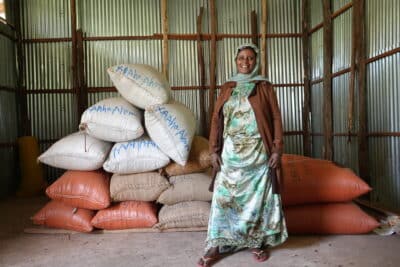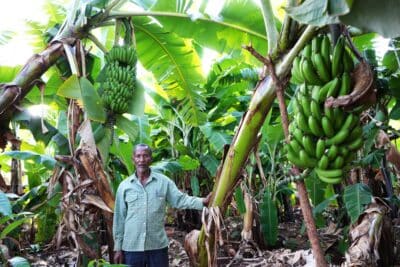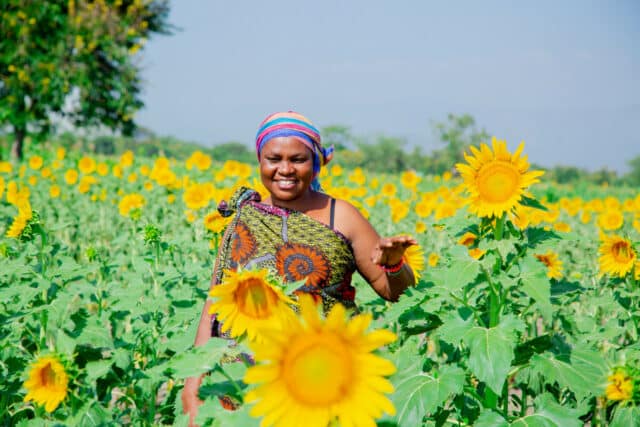Expert view
8 March 2018
Meet Joyce, a female farmer filling the gender gap in agriculture
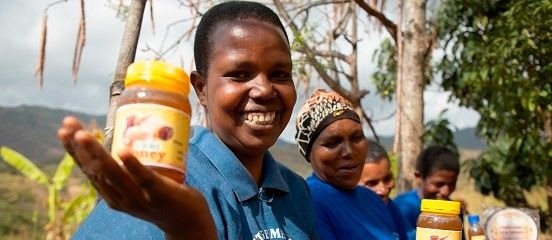
"We were cutting down trees and didn’t realise how important trees were. But then we started beekeeping and now we realise it is important for us to preserve the forest for the bees. Now we earn an income from forest products." - Joyce, Tanzania.
Guest blog by Farming First
This International Women’s Day, Farming First has launched a new campaign asking “where does the gender gap in agriculture still exist, and how can we fill it?”
According to a recent report from UN Women, only 13 per cent of agricultural landholders worldwide are women. Despite significant growth in recent years, only 30 per cent of agricultural scientists in Kenya and Nigeria are female, according to the International Food Policy Research Institute. FAO also reports that women receive only 10 per cent of the aid directed to agriculture, and only five per cent of agricultural extension services.
But progress is being made. A new webpage launched this week by Farming First tells the stories of six women from around the world successfully closing this gender gap.
This includes the story of Joyce Lali – a beekeeping business woman that Farm Africa has been working with in Erri Village, Tanzania.
Due to increased food demand, farmers in this region have continued to clear land from the forest for agriculture. This practice not only releases large and unnecessary amounts of carbon into the atmosphere that will exacerbate climate change. It also leads to soil erosion, silting and the bank erosion of streams which make farming more difficult, and the population more vulnerable to extreme weather events.
A Farm Africa initiative has helped Joyce and her colleagues create a livelihood that is forest friendly, by producing a range of honey products. Previously, women were unable to participate in beekeeping as it was culturally unacceptable for them to climb trees. Farm Africa introduced ground-level hives, and with this new line of income, the community is no longer compelled to cut down the forest, but to care for it.
“In Tanzania, it is estimated that the agricultural gender gap costs US$105 million annually,” commented Natalie Kostus, Executive Vice President of the International Alliance of Women.
“Across East Africa, women like Joyce are impacted every day by practices and beliefs that limit their access to productive opportunities and natural resources. They are perceived by the community to lack knowledge, skills, and strength to participate in forest programs.”
“In many cases, even if the national law grants land rights to women, traditional and customary practices preclude women from accessing, owning, and inheriting the land in this region. This puts women at risk of losing resources and benefits, such as payments for environmental services.”
“Women like Joyce need to have clear ownership rights to forests and forest land, necessary for the active socio-economic participation of women in forest management, conservation of biodiversity, climate change adaptation and mitigation, and emerging opportunities, such as carbon trading.”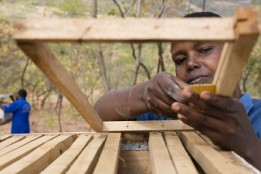
“It is also crucial they have productive work and financial security; raising their voice and power in household and community decision-making, organising women’s groups supporting and learning from each other, accessing technology, and sending their children to school, benefiting the whole community. A needed initiative is training on women’s rights for women and men in the village, including traditional leaders. This will go a long way to closing the agricultural gender gap in East Africa.”
Visit the new Farming First gender gap page here:
www.farmingfirst.org/gender-gap
Search #FilltheGap on Twitter to join the conversation.

